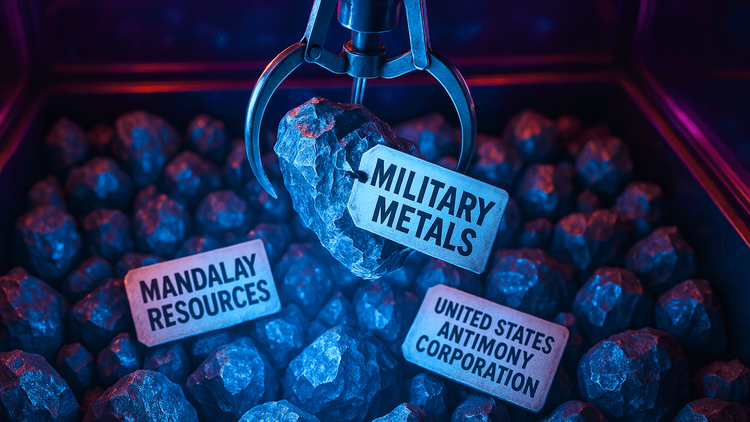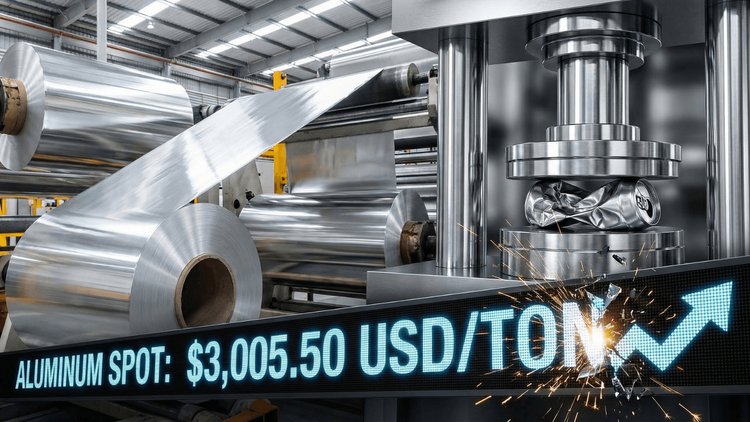Periodic Table? More Like Political Table—And China’s Flipping It
China’s rare earth export controls mark a new phase in economic warfare—threatening to destabilize global supply chains and challenge America’s tech and defense dominance.

In a geopolitical chess match growing more intense by the day, China has made its next move: restricting the export of seven key rare earth elements that power everything from smartphones to fighter jets. While many of these elements are relatively common in Earth’s crust, their extraction and refinement are far more complex—and that’s exactly where China holds the upper hand. With dominance over nearly every stage of the global rare earths supply chain, Beijing’s move adds yet another layer of pressure on Washington amid escalating trade and tech tensions.
At the heart of the issue is the fact that while the United States can mine some rare earths, it still lacks the processing infrastructure to convert them into usable materials. This leaves U.S. industry—especially defense and clean tech—dangerously exposed. China, by contrast, controls over 80% of the world’s rare earth refining capacity. By adding terbium, yttrium, dysprosium, gadolinium, lutetium, samarium, and scandium to its restricted export list, Beijing isn’t just flexing its muscles. It’s brandishing a resource-based weapon, fine-tuned for maximum leverage at the negotiating table.
Among these metals, terbium stands out for its extreme scarcity and vital role in defense technologies. Used in heat-resistant magnets that go into missiles, submarines, and aircraft, terbium is as elusive as it is essential. Despite being a minor component in most deposits, its impact on high-tech military systems is outsized. The U.S. Department of Defense has even acknowledged that sourcing this metal is a formidable challenge, one made harder by the fact that the U.S. imports only 5% of China’s terbium, with most of it going to Japan.
Yttrium, another target of China’s export controls, highlights the biomedical and superconducting applications that are also at stake. This metal is used in cancer treatment, medical lasers, and high-temperature superconductors—technologies critical to both public health and scientific advancement. Yet, despite having a domestic source at the Mountain Pass Mine in California, the U.S. still lacks the capacity to process yttrium domestically, instead exporting it for refining. That’s an Achilles' heel that China is now exploiting with precision.
Dysprosium presents a double threat. On one hand, it’s crucial to permanent magnets found in electric vehicles and wind turbines—key pillars of the clean energy transition. On the other, its ability to absorb neutrons makes it vital for nuclear reactor control rods. With less than 0.1% of China’s dysprosium exports landing in the U.S., the country finds itself on the outside looking in. While Australia’s Lynas Rare Earths is working to ramp up production in Malaysia, that’s a long-term solution to a short-term crisis.
Gadolinium, known to anyone who’s had an MRI, serves as a contrast agent in medical imaging. But its role doesn’t stop there. It enhances the performance of metal alloys and helps power electronic components and data storage devices. More critically, it also plays a role in nuclear reactor cores. Losing access to gadolinium would ripple across multiple sectors, from healthcare to energy security.
Unlike the others, lutetium is dense and hard—a trait that makes it particularly useful in refining catalysts used in oil production. The U.S. is almost entirely dependent on China for its supply, putting a critical link in its energy chain in jeopardy. With Beijing now restricting exports, oil refiners in the U.S. may soon be scrambling for alternatives.
Samarium isn’t just another exotic name on a periodic table. Its alloys—especially samarium-cobalt—are on the U.S. critical materials list for potential stockpiling. These powerful magnets are used in turbines, vehicles, optical lasers, and even nuclear reactors. The metal’s resilience at high temperatures makes it indispensable in both commercial and defense sectors. As with the others, China’s grip on the supply chain leaves the U.S. dangerously exposed.
Scandium might not be a household name, but its uses are surprisingly diverse—from baseball bats to fighter jets. Its low density and high melting point make it ideal for aerospace applications, while its radioactive properties lend it value in oil refining and leak detection in pipelines. The kicker? The U.S. hasn’t produced scandium domestically in over five decades. Instead, it relies almost entirely on imports, mostly from—you guessed it—China.

What’s particularly alarming is that these seven metals aren’t just rare; they’re strategically rare. They are foundational to advanced manufacturing, clean energy, medicine, and national defense. And unlike oil or grain, where alternative sources can be developed relatively quickly, rare earth metals require years—sometimes decades—of geological exploration, permitting, and processing infrastructure to bring online. That long lead time gives China an almost unmatchable first-mover advantage.
Interestingly, China has opted not to restrict exports of neodymium and praseodymium in this round of trade weaponization. That’s a calculated decision. These two elements are the lifeblood of permanent magnet motors used in electric vehicles and wind turbines. While China still dominates their production, the U.S. has made some progress here. MP Materials has reopened its Mountain Pass mine and is now refining these elements domestically, producing over 1,100 tons of neodymium-praseodymium in the past year. By contrast, China churned out more than 58,000 tons in the same period—a stark reminder of the scale imbalance.
It’s clear that Beijing’s rare earth gambit is more than a tit-for-tat response to U.S. tariffs. It’s a calculated strike in a larger campaign to exert pressure where it hurts most. As global tech supply chains become more weaponized, and as nations race to secure critical minerals for the energy transition, we’re entering a new era where mining policy and national security are intertwined like never before.
In this high-stakes global game, access to rare earths may soon determine not just who leads in technology—but who leads, period.
Conclusion
China’s decision to weaponize rare earth metals isn’t just a strategic flex—it’s a wake-up call. By restricting the export of seven key rare earths, Beijing is spotlighting a decades-old vulnerability in the U.S. supply chain that’s finally come home to roost. These aren’t just metals; they’re the building blocks of modern life and modern warfare. Whether it’s powering fighter jets, treating cancer, refining oil, or building wind turbines, these elements are indispensable—and, for now, China controls the tap. If the United States wants to remain competitive in this new era of resource geopolitics, it will have to rebuild its rare earth supply chain from the ground up. Because in today’s world, whoever controls the elements controls the future.






